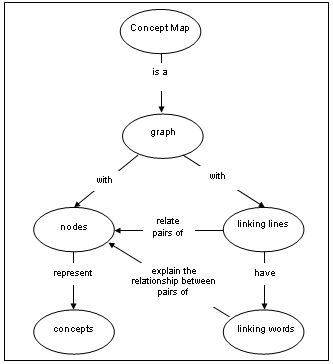
Concept maps create a visual picture to explain words or ideas. For example this map shows the idea of a Concept map. Concept maps seek to organizes words and ideas into a hierarchical structure
http://redie.uabc.mx/contenido/vol2no1/art-11-eng/contenido-ruiz-figura1.png





